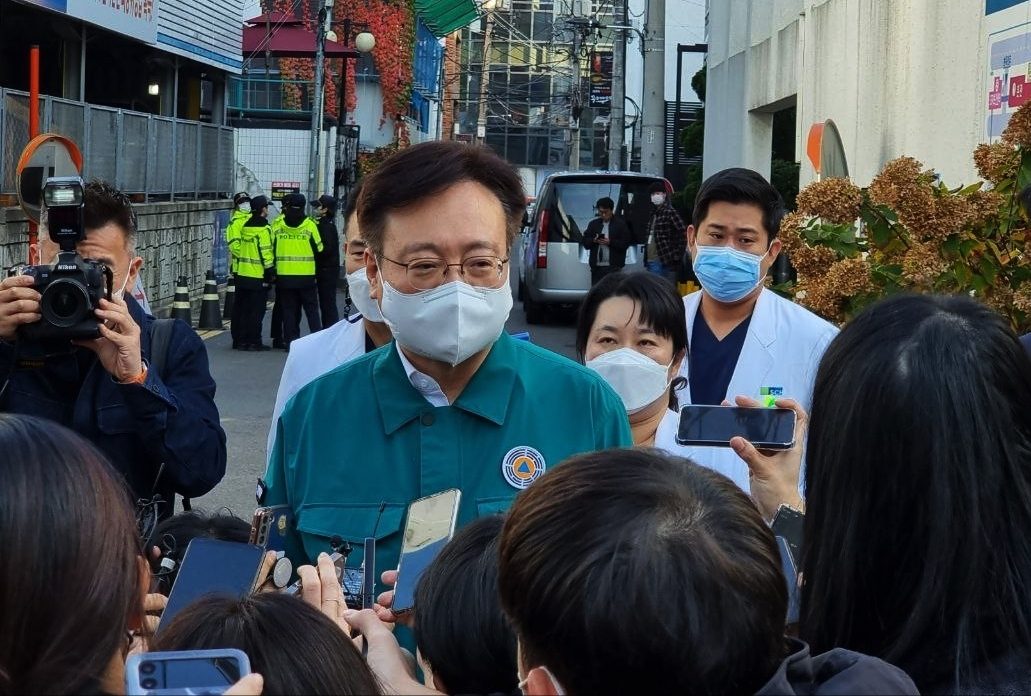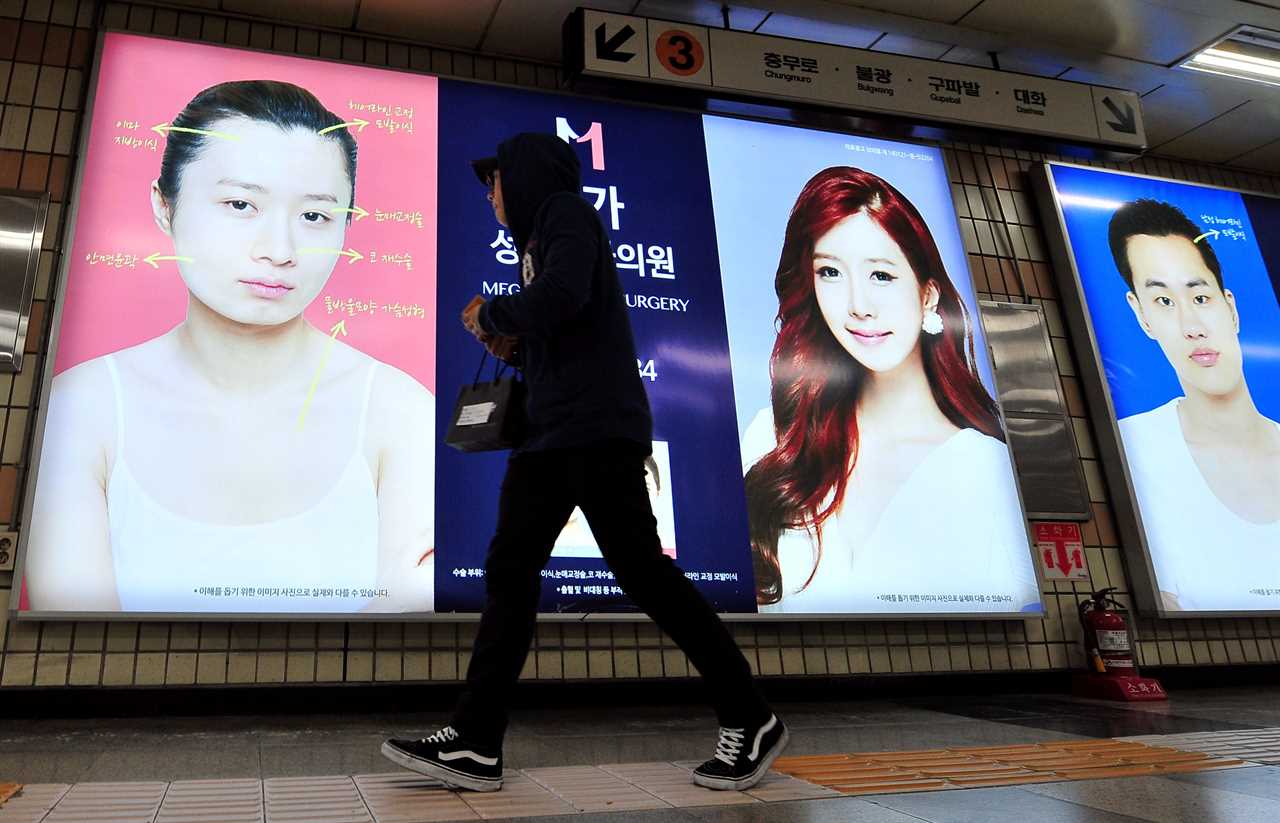---------------------------------------
South Korea touts world-class health care infrastructure. Before the pandemic, it had become a bustling medical tourism hotspot. In 2019, more than 90,000 people visited the country to avail themselves of cosmetic surgery there, and its own citizens have seen life expectancy shoot up to among the highest of developed countries, according to the Organization for Economic Cooperation and Development.
And yet, in July last year, a 37-year-old nurse died of a brain hemorrhage because of a lack of care. She had collapsed while on duty at one of Korea’s biggest hospitals, but could not receive critical treatment as there were no neurosurgeons on call. She was later transferred to a different hospital, where she was pronounced dead.
[time-brightcove not-tgx=”true”]
The nurse’s death brought to light South Korea’s dearth of physicians specializing in vital care. Of the doctors the country does have, many opt instead for more lucrative fields like plastic surgery and dermatology, while not enough are trained to perform more essential specialties, like higher-risk surgeries, pediatrics, and general medicine. Without intervention, the shortage is bound to worsen, with estimates of up to 27,000 doctors needed by 2035 to meet demand.
The government is looking into a range of proposals to solve this critical shortage, but one recent suggestion has worried patient advocates. Health minister Cho Kyoo-hong said at a press briefing last week that his agency will review “various measures to relieve the burden of medical professionals,” according to the Korea Times, including possibly enacting a special law aimed at reducing the severity of punishment doctors face for medical negligence or malpractice.

Andrei Olfert—Sputnik/APSouth Korea’s Minister of Health and Welfare Cho Kyoo-hong speaks to the media in Seoul on Oct. 30, 2022.
According to the ministry, many doctors tend to avoid more critical specialties amid high risks of possible financial ruin due to the country’s stringent standards for accountability. The lack of liability protections for medical professionals is a key component of the “harsh” working conditions facing doctors, says Kim Minsung, a postdoctoral fellow in medical ethics and law at the University of Hong Kong who has studied South Korea’s health care industry and regulation.
But civic society groups reacted by calling the proposal a “step in the wrong direction,” criticizing it for patronizing doctors instead of catering to patients’ needs.
How bad is South Korea’s specialized doctor shortage?
South Korea is home to at least 130,000 doctors, but that isn’t enough for its needs. Latest OECD data show that South Korea has just 2.5 doctors per 1,000 inhabitants, or about two-thirds of the OECD average of 3.7. This scarcity has manifested itself in extreme ways: in one instance, a hospital had to stop offering inpatient care for children for three months because it could not hire resident pediatricians.
The supply problem starts early, at the university level: since 2006, the government has had an annual admission limit of 3,058 students for 40 medical schools in the country. Doctors who prefer the exclusivity of the profession and the government that wants there to be more doctors are repeatedly at odds over reforming the quota—so much so that in August 2020, doctors in training staged a walkout amid a proposed increase of the admission cap. Doctors opposing a hike have argued that the real problem is low pay and weak infrastructure in rural areas where healthcare roles are most deprived.
This is despite the fact that doctors earn four times the average salary of other professionals in South Korea. The issue is that many of them are not specializing in vital care. Kim, the University of Hong Kong scholar, says that’s because aspiring medical professionals are more enticed to train in fields like cosmetic surgery, for which fees are less strictly regulated and typically much higher than they are for physicians. South Korea boasts a nearly $4 billion plastic surgery industry that takes up 25% of the global market share, owing in large part to the beauty standards promoted by the country’s popular and far-reaching entertainment businesses.

Jung Yeon-je—AFP/Getty ImagesA pedestrian walks past advertisements for plastic surgery clinics at a subway station in Seoul in March 2014.
Specializing in vital care, on the other hand, is not as profitable, and can be exhausting, too. In 2019, Korea Herald reported that 98% of residents worked over 80 hours a week in 2017, and surgery-related departments regularly fail to fill up slots for residency programs. The average age of surgeons is now 53 years old, according to a December report from Korean broadcaster KBS, which also says that as the country’s fertility rate declines and its population ages, fewer doctors want to work in pediatrics and obstetrics.
Is medical malpractice a major issue in South Korea?
A November study from the Korea Medical Association released in November showed that some 750 South Korean doctors yearly—or an average of more than two per day—are criminally charged with professional negligence resulting in death or injury. That’s 14.7 times higher than the number of similar indictments in Japan, 580.6 times higher than in the UK, and 26.6 times higher than in Germany.
But complaints about malpractice are not completely unfounded. Patients in South Korea have the lowest perception of their own health status of all OECD countries, and a 2016 study found that, unlike in many other countries, the public is most concerned with the quality of the health care system more so than access or cost. Faith in hospitals and surgeons is particularly low due in large part to suspicions—based on cases that have made the news—of unqualified staff mishandling operations. In 2021, the government required surveillance cameras be installed in operating rooms where patients are under general anesthesia to try to stamp down on malpractice cases.
Another study from 2019, based on interviews with more than 3,000 doctors in South Korea, found that one in every three had medical disputes in the past three years, though 96% of the respondents believed a special law on medical accidents was needed to help resolve such disputes through non-criminal payments instead of criminal punishment.
In terms of compensation, currently, victims of “medical mishaps” are allowed to claim up to 30 million won ($24,500), with 70% shouldered by the government and 30% by the institution or doctor responsible. The government is reportedly considering shouldering more of the cost.
On Feb. 2, the Seoul-based Citizens’ Coalition for Economic Justice said in a statement that relaxing measures against medical malpractice will lead doctors to relax their “duty of care responsibilities, causing anxiety and distrust among the public.” Jung Ho-chul, an international staff member for CCEJ, says the doctor shortage and malpractice are “unrelated.” If anything, the government should strengthen—not weaken—the law penalizing doctors who commit malpractice, including taking away their medical licenses. To address the shortage, he says, the government should focus on lifting the medical school quota, among other things.
But Kim says the current legal system is excessively skewed in favor of patients, which creates a doctor-client relationship in which doctors can be afraid to take up critical care cases. Kim says that doctors shouldn’t be free from liability for malpractice but that the majority of disputes should really be handled through civil courts with more appropriate consequences. In most countries, he says, “criminal medical malpractice really has less cases.”
-----------------------------------------
By: Chad de Guzman
Title: To Address Dire Doctor Shortage, South Korea Proposes Less Medical Malpractice Punishment
Sourced From: time.com/6253849/south-korea-surgeons-shortage-malpractice/
Published Date: Thu, 09 Feb 2023 06:00:24 +0000
Read More
Did you miss our previous article...
https://prohealthsciences.com/general-health-and-wellness/dear-patient-if-you-have-to-treat-a-cold-this-is-what-you-need-to-know
 General Health and WellnessFitness and ExerciseSupplements and VitaminsPandemic NewsVideosPrivacy PolicyTerms And Conditions
General Health and WellnessFitness and ExerciseSupplements and VitaminsPandemic NewsVideosPrivacy PolicyTerms And Conditions
